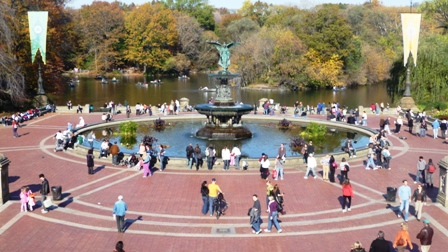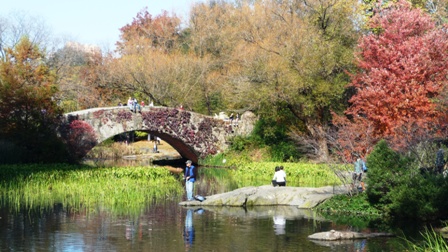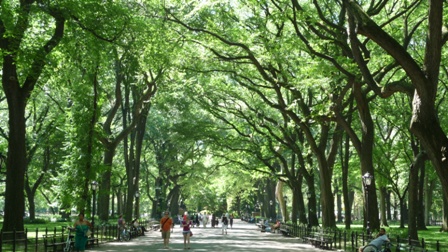With 25 million visitors a year, New York's Central Park is the most popular green space in America. But strangely, most of the people who visit the park have little idea what they are seeing.
As they meander down some 58 miles of paths through a landscape of rolling lawns, trees and lakes (home to some 250 species of birds) they have little awareness that they are walking in one of the greatest man-made wonders of the world.
Because everything in this lovely park was created by man, all in an area that once was a dismal swamp.
The idea of a park was first proposed in 1844 by newspaper editor William Cullen Bryant as a place to give working-class New Yorkers a "healthy alternative to the saloon."
By 1853, the city had spent $5 million to buy 6 percent of Manhattan Island - a slice of property a half-mile wide by 2.5 miles long. The land was basically worthless for development and filled with swamps, bluffs and rocky outcrops.
The question was, what to do with the land? No public park of this type existed in the world. A competition was held in 1857 and Frederick Law Olmsted and Calvert Vaux won with the challenge to design a park that would create pastoral landscapes reminiscent of English paintings, filled with rolling meadows and deep woods, offset by huge public terraces.
Building the park became one of the most massive construction projects in New York history. Twenty thousand Irish workers labored for 15 years. In the midst of the Civil War, more gunpowder than was exploded at Gettysburg was used to blast out rock, while an estimated 10 million horse-carts rolled in and out, dragging away debris and swamp and bringing back rich topsoil from New Jersey.
Ninety-five miles of pipe were laid underground to feed the six man-made lakes, while European craftsman created seven splashing fountains. Finally, 9,000 benches (seven miles of seats) were placed near ponds, overlooks and in wooded glens under stately elms.
Though the park has had an up and down history, today under the guidance of the Central Park Conservancy and through private contributions of more than $500 million, it has been restored to the brilliancy of the original design by Olmsted and Vaux. A team of 49 gardeners keep the 843 acres in immaculate condition.
You can tour the park on bike tours, walking tours, pedi-cabs and surprisingly inexpensive horse-drawn carriage rides (just $34 for the first half hour, $10 for each additional 15 minutes). Or glide through the park on water using rowboats, available at the Loeb Boathouse for $12 an hour.
But perhaps the best way to experience the park is to just wander, get hopelessly lost and look for treasures along the way. From The Obelisk, the oldest monument in America, originally erected in Heliopolis around 1500 B.C., to Belvedere Castle, a Scottish-style castle built in 1865 on a rocky point overlooking a pond and meadows, there are surprises around every bend. Wherever you go, remember the words of Olmsted: "Every foot of the park, every tree and bush, every arch, roadway and walk, has been fixed where it is with a purpose."
IF YOU GO: Central Park has a famous zoo; a Shakespearean theatre; two upscale restaurants and four inexpensive outdoor cafes; a pond for miniature boat races; 56 bridges; and the poignant Strawberry Fields tribute to Beatle John Lennon, who was murdered nearby. And that's just the beginning. There are two excellent Web sites for information: www.centralparknyc.org is the Conservancy's site; and www.centralpark.com is a commercial site.





